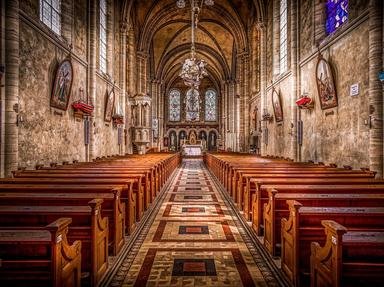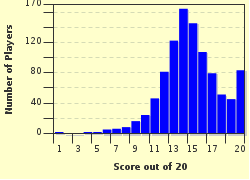Quiz Answer Key and Fun Facts
1. Which of these words refers to the area over which the Pope has jurisdiction as its bishop?
2. According to Catholic tradition, who founded the Catholic Church?
3. During the Church's early years, persecution of Christians was commonplace under the Romans. However, Emperors Constantine I and Licinius signed what edict that declared religious tolerance?
4. The First Council of Nicaea in 325 AD was significant for what reason?
5. Who is the highest earthly authority in the Catholic Church?
6. Who was the first Pope of the Catholic Church?
7. What is Papal infallibility?
8. According to the Catholic Church, souls that are in a state of grace yet imperfect go where to be purified?
9. Who elects a new Pope?
10. The election of a Pope is called a what?
11. What is the upper limit on age for a cardinal to be eligible to vote in the process of electing the pope?
12. The part of the Catholic Mass where consecrated bread and wine are administered is called what?
13. When the bread and wine are consecrated, Catholics believe that the body and blood of Christ are physically present, thoroughly replacing the physical presence of the bread and wine although they appear to be the same.
14. In the Catholic Church, baptism normally occurs when?
15. The canonization of an individual is what makes him/her a saint and allows that person to go to heaven.
16. Individuals who are excommunicated from the Catholic Church cannot ever be accepted back into the church.
17. "Humanae Vitae" is an encyclical issued by Pope Paul VI prohibiting what?
18. Roman Catholics are the largest single Christian denomination in the United States.
19. The first Christian celebration in North America was a Catholic Mass.
20. Catholics have faced much discrimination in the United States. However, when the first Catholic president of the U.S. was elected, anti-Catholic attitudes decreased. What was this president's name?
Source: Author
Bdawg89
This quiz was reviewed by FunTrivia editor
CellarDoor before going online.
Any errors found in FunTrivia content are routinely corrected through our feedback system.


